14 Top-Rated Tourist Attractions in Tel Aviv
Tel Aviv, with its golden beaches and lively cosmopolitan outlook is Israel's most modern metropolis. Most visitors land here to soak up the sun, shop-until-they-drop in cutesy boutiques, and enjoy some serious foodie action at the city's renowned café and restaurant scene. The beach may be the major highlight, but Tel Aviv is more than its famous strip of sand. Nicknamed "The White City," the town was awarded UNESCO World Heritage Status in 2003 in recognition of its multitude of fine examples of Bauhaus architecture (an early 20th-century modernist style of building). The city itself is full of small museums and funky art galleries that provide excellent sightseeing opportunities. While Jaffa, just to the south, is a gorgeously well-preserved old city with an old port that has been in use for thousands of years and is now revitalized with restaurants and cafés.
1 Tel Aviv Beaches
Tel Aviv is defined by its coastal position. The beaches attract tourists and locals alike. On weekends Tel Aviv's strips of sand are crowded with sun-worshippers, posers, partiers, and people just chilling out. The most popular sandy stretches are centrally-located Gordon Beach, Frishman Beach, and Banana Beach where you'll find excellent facilities such as fresh-water showers, sun loungers for rent, and cafés.
2 Jaffa
A short walk south along the coast from downtown Tel Aviv brings you to the old Arab port town of Jaffa with its preserved acropolis remains and well-restored stone architecture. Much of the original bazaar area is now home to restaurants and artisan boutiques. It's particularly lively in the evening when the old town throngs with diners. The flea market here is the major attraction for visitors, full of the hubbub of a genuine souk, whileSt. Peter's Monastery and the Old Port area itself are also not to be missed. Compared to the big-city hustle of Tel Aviv, Jaffa is a wonderfully tranquil place for a stroll that, despite serious gentrification, still retains its old-fashioned charm.
Location: 2 km south from Tel Aviv
- Read More:
- 9 Top-Rated Tourist Attractions in Jaffa
3 Yemenite Quarter

One of Tel Aviv's most atmospheric neighbourhoods, the Yemenite Quarter is full of meandering alleyways lined by old-style architecture that has withstood the area's gentrification. It was first settled by Yemenite Jews in the early 20th century, and the original feel of the closely-packed streets is still very much alive. The neighborhood backs onto Carmel Market; busy, colorful, full of fresh produce and Tel Aviv's answer to Jerusalem's famous Manane Yehuda Market. If you're hungry in Tel Aviv and want a cheap meal, this is the place to head.
Location: off Allenby Street, Central City
4 Dizengoff Circle and Surrounds
The hub of Tel Aviv is this central plaza, laid out on two levels with a raised area for pedestrians above the carriageway and topped by the peculiar modern-art Fire and Water Fountain designed by Israeli artist, Yaacov Agam. The plaza and the street running off it are named after Meir Dizengoff, Tel Aviv's first mayor after the city separated from Jaffa. From the circle, Dizengoff Street runs southeast to Habimah Square, Tel Aviv's cultural center and home to the Habimah Theatre, built in 1935. This is also where you'll find the excellent Helena Rubenstein Pavilion of Contemporary Art, which hosts a program of temporary art exhibits.
Location: Dizengoff Street, Central City
5 Tel Aviv Museum of Art
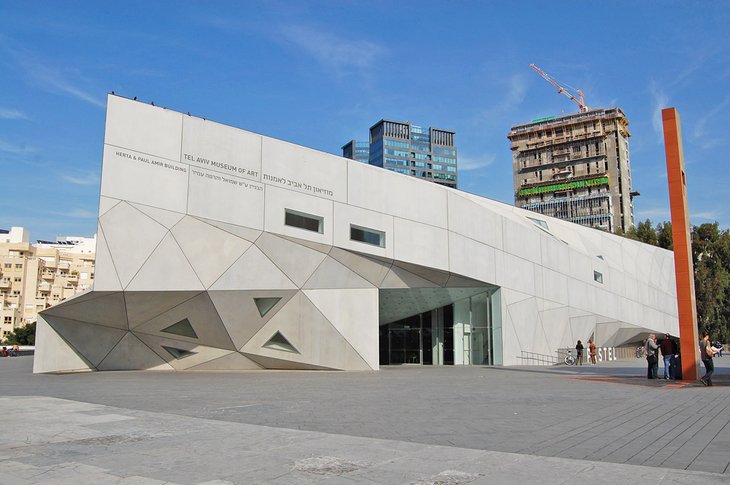
A leading light in Israel's contemporary art scene, the Tel Aviv Museum of Art contains works by Degas, Monet, Van Gogh, Henry Moore, Picasso, Jackson Pollock and the world's largest collection of work by Israeli artists. The ultra-modern building with its sophisticated architecture houses and highlights the artworks perfectly. As well as the permanent collection, the museum hosts regular temporary exhibits and other events.
Hours: Mon, Wed, Sat 10am-6pm; Tue, Thu 10am-9pm
Admission: adult 50NIS, student 40NIS, child under 18yrs free
Address: 27 Shaul HaMelech Boulevard, Central City
Official site: www.tamuseum.com
6 Neve Tzedek Quarter
The funky Neve Tzedek Quarter is the city's oldest neighborhood with European-Jewish settlers first building houses here in the 1880s. These lovely old buildings have been well preserved and many now house arty boutiques, cafés, and some of the city's hippest restaurants. Snuggled within the quarter on Rochkach Street, you'll find the Rockach House, home to a small sculpture gallery, and the Nachum Gutman Art Museum,which displays the artwork of this Israeli painter. In the district's southwest corner is the old Ottoman railway station called the HaTachana. This has been restored and reopened as a rather stylish complex of cafes, restaurants, and designer boutiques.
Location: Central City
7 Bialik Street
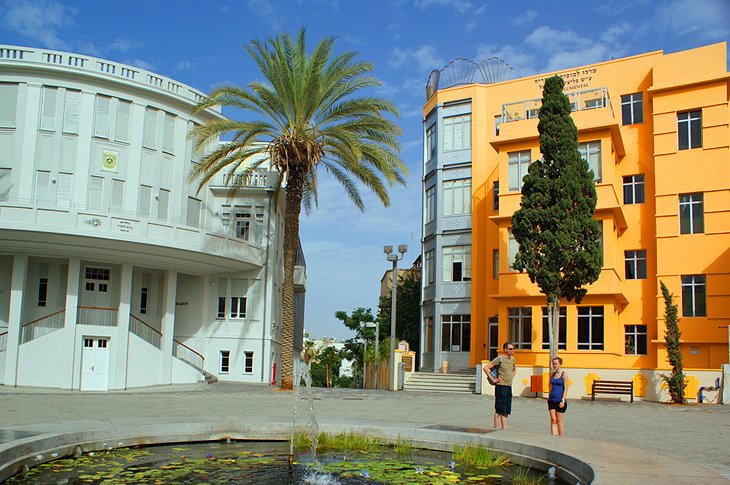
Little Bialik Street is home to three historical houses that will interest history and culture lovers. The House of artist Reuven Rubin is now a museum dedicated to his work, full of paintings as well as old photographs of Tel Aviv. Further along the street, Bialik House used to be the residence of poet, Chaim Nachman Bialik, and is now a tribute to his life and works. Next door is Tel Aviv's original town hall, now known as Beit Ha'ir. It contains displays documenting Tel Aviv's history.
Location: Central City
8 Haganah Museum
In the house once occupied by Haganah Commander Eliyahu Golomb, theHaganah Museum documents the Haganah guerrilla force, which actively attacked British Mandate rule. There are weaponry exhibits and information on the Haganah's activities.
Hours: Sun-Thu 9am-4pm
Admission: Free
Address: 23 Rothschild Boulevard, Central City
9 Namal (Old Port Area)
Tel Aviv's old port area (known as Namal) has been slickly rejuvenated and is now a hip waterfront hang-out strip full of shops and cafés. The boardwalk here is a favorite for promenading youngsters, while families flock to the area on weekends. The port area is also home to an excellent indoor market.
Location: off HaYarkon Street
Official site: www.namal.co.il
10 Ben-Gurion House
David Ben-Gurion was Israel's first prime minister and his residence has been left largely as it was when he and his wife Paula lived here. There is an interesting display of old black-and-white photographs, and a number of his letters are exhibited. The house also still contains part of his extensive library.
Hours: Sun-Thu 8am-3pm, Fri 8am-1pm
Admission: Free
Address: 17 Ben Gurion Boulevard
11 Eretz Israel Museum
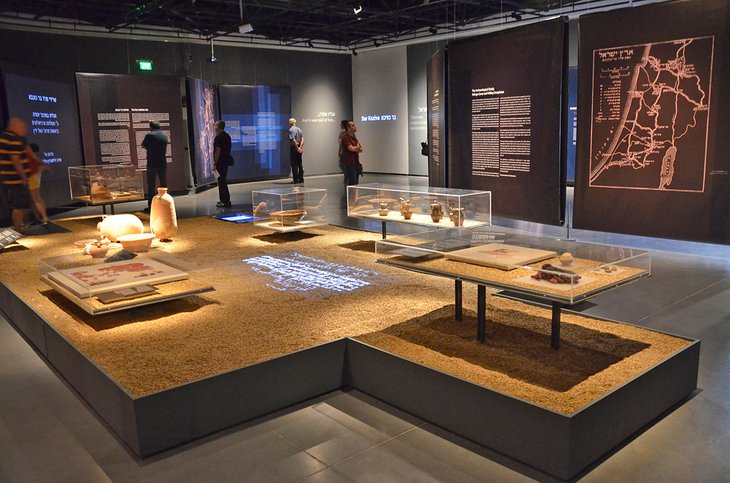
The Eretz Israel Museum (Land of Israel Museum) occupies a complex of buildings that also takes in the Tell Qasile archaeological site. The complex includes a planetarium as well as pavilions with displays on ceramics, glass, the history of writing, science, ethnography, and folklore. In the center of the complex is Tell Qasile where Israeli archaeologists have identified 12 settlement levels dating back to the 12th century BC. Stratum XII and Stratum XI are attributed to the Philistines, while Stratum X dates from the 10th century when the kings of Israel had a port here. Later strata show that the site was still occupied during the Hellenistic, Roman, and Byzantine eras and was only finally abandoned in favor of nearby Jaffa during the Islamic period.
Hours: Sun-Wed 10am-4pm, Thu 10am-8pm, Fri-Sat 10am-2pm
Admission: Adult 42NIS, Child 28NIS
Address: 2 Chaim Levanon Street
12 Beit Hatefutsoth
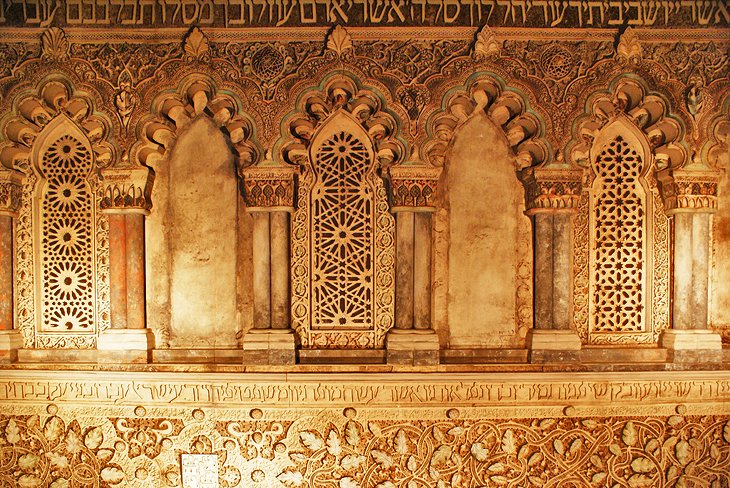
Beit Hatefutsoth (the Diaspora Museum) illustrates the life and culture of the Jewish people throughout history. The museum displays a wide variety of exhibits including film, recordings, and models, to document the world's Jewish population across the centuries.
Hours: Sun-Tue 10am-4pm, Wed-Thu 10am-7pm, Fri 9am-1pm
Admission: Adult 42NIS, Student/Child 32NIS
Address: 2 Klausner Street
Official site: www.bh.org.il
13 Netanya
This popular seaside resort sits on a beautiful golden sand beach that stretches for more than ten kilometers. The shoreline is the major attraction. Tel Aviv locals flock here during sunny weekends to chill out with friends and family. Downtown is crammed with cafés and restaurants and really buzzes with energy during summer evenings. It's a quieter alternative to Tel Aviv if you don't fancy the big-city rush, and there are plenty of accommodation options here. The Jewish Legion Museum (four kilometers north of the town center) documents the achievements of Jewish military units in the British army during World War I.
Location: 32 km north of Tel Aviv
14 Lod
Although now known mainly for being home to Ben-Gurion International Airport, Lod has a rich history. Founded by the tribe of Benjamin after the Israelite occupation of the Promised Land, Lod was later destroyed by the Assyrians during the 8th century BC. From the 4th century onwards, it was settled by Greeks who renamed it Lydda. During the Byzantine era, Lydda/Lod became an important Christian center, and St. Paul is said to have healed a bedridden man here before traveling on to Caesarea. It's also one of the towns mentioned on the famous 6th century Madaba Map of the Holy Land in Madaba, Jordan. Today, you can visit Lod's Greek Orthodox Church of St. George, which was rebuilt in 1870 over the original Crusader era chapel here, and the El-Chodr Mosque, built in the 12th century.
Location: 22 km southeast from Tel Aviv
Other Notable Attractions
Independence Hall
The Independence Hall (Beit Dizengoff) is the former residence of Tel Aviv's first mayor and is where David Ben-Gurion proclaimed the state of Israel on May 14th, 1948. A display of mementos from this event is exhibited.
Address: 16 Rothschild Boulevard, Tel Aviv
Shalom Tower
Tel Aviv's first high-rise building was the Shalom Tower (Peace Tower) that is mainly used as an office block but also houses a shopping center and museum. For visitors, it is of interest for the Discover Tel Aviv Centre with exhibits of the city's history and the viewing platform at the top, from where you can see panoramic views across the city.
Location: Herzl Street, Tel Aviv
Azrieli Observatory
On the 49th floor of the Azrieli Centre high-rise is this observation deckwith panoramic city skyline views.
Address: 132 Menachem Begin Boulevard, Tel Aviv
Design Museum Holon
One of Tel Aviv's newest pieces of iconic architecture, the Design Museum Holon is the work of architect, Ron Arad. It hosts a program of temporary exhibitions focused on design, fashion, and art.
Address: 8 Pinhas Eilon Street, Holon, Tel Aviv
Official site: www.dmh.org.il
Rishon LeZion
Rishon LeZion is one of the earliest Jewish agricultural settlements, founded in 1882. The Great Synagogue, built in 1885, is in the center of town where you'll also find the History Museum, which tells the story of the Zionist settlers who made their way here from Europe.
Address: 14 km south from Tel Aviv
History
Although Tel Aviv itself is a modern town, Jaffa just to the south has been occupied for centuries. Excavations in recent years have brought to light a wall dating from the Hyksos period (18th-16th centuries BC), and archaeologists have also found a stone door with an inscription in the name of Egypt's Pharaoh Ramses II dating from the 13th century BC. Around 1200 BC, Philistines settled in Jaffa and on Tell Qasile (north of the river Yarqon). Later (approximately 1000 BC), the town was captured by David, and it's thought that his son Solomon imported cedar wood fromLebanon for the construction of the temple in Jerusalem through the port of Jaffa or the harbor near Tell Qasile. In later centuries, however, the population of Jaffa was predominantly Phoenician, and from the 3rd century BC, predominantly Greek. During the 1st century BC, the port of Jaffa lost its leading place to the newly founded town of Caesarea.
The Christian era in Jaffa began with the visit of the apostle Peter (Acts 9,36-43) and it became the see of a bishop during the 4th century AD. In AD 636, it was conquered by the Arabs, and during the 7th and 8th centuries enjoyed a period of prosperity under the Omayyad and Abbasid Caliphs. The Crusaders destroyed the town in 1099 and then rebuilt the walls; thereafter the port was used by pilgrims visiting the Holy Land. The Crusader occupation came to an end, however, with the capture of the town by the Mameluke Sultan Baibars in 1267. Thereafter, for many centuries, Jaffa lay desolate.
From 1520, Palestine was ruled by the Ottomans who in 1650 gave permission to Franciscan friars to build a church and pilgrim hospice at Jaffa. In 1807, Mahmud, whose severity earned him the name of Abu Nebut ("Father of the Cudgel"), became Pasha of Gaza and made Jaffa his capital. Many monuments in Jaffa date from this time including the Seraglio (now a museum), the nearby Hammam, the Mahmudiye Mosque, and the Abu Nebut Fountain.
A new period of development under European auspices began in the mid 19th century.
The "capitulations" in agreement with the Ottoman government ensured great influence for the European powers in Palestine. The French built hospitals and enlarged monasteries and churches. The Russians built a church dedicated to St. Peter at the "Tomb of Tabitha" on the hill of Abu Kabir. Farther north, the Jewish settlements of Neve Tzedek and Neve Shalom were established. In 1892, French engineers built a railway line between Jaffa and Jerusalem. In 1909, immigrants from Russia founded the purely Jewish suburb of Ahuzat Bayit, with the Herzl Grammar School (on a site now occupied by the Shalom Tower). This marked the beginning of the modern town, which was named Tel Aviv in 1910, and following Arab riots in 1921, broke away from Jaffa and became an independent city. During the British Mandate (1920-48), wide new streets were cut through Jaffa's maze of alleys to make it easier to control disorder. By 1924, the town had a population of 35,000.
The United Nations plan for the partition of Palestine (1947) proposed that Jaffa (population 100,000, including 30,000 Jews) should remain Arab, and Tel Aviv (population 230,000) become Jewish. In 1948, as the British Mandate was dissolved, an Arab sniper attack led to Jewish forces capturing Jaffa. Much of the Arab population of Jaffa fled during the onslaught. On May 14th, 1948, David Ben-Gurion proclaimed the state of Israel in the former house of the first mayor of Tel Aviv, Meir Dizengoff. In 1949, the old town of Jaffa was amalgamated with the new Jewish town under the name of Tel Aviv-Yafo.
9 Top-Rated Tourist Attractions in Jaffa
The old Arab port of Jaffa is imbued with old-world atmosphere that makes a pleasant change from Tel Aviv's all-out modernity. In its alleyways, you can catch a whiff of a slower and simpler age. Despite this old-time elegance, Jaffa is being thoroughly gentrified with boutiques and cafés popping up all over the center of town. This is a great place to come for dinner or to sit back in a café for the afternoon.
1 Crusaders and Churches: St. Peter's Monastery
St. Peter's Monastery is built on top of a 13th-century Crusader castle, which was, in turn, built on top of the original settlement's acropolis. The name of the monastery is in honor of the Apostle Peter's visit to Jaffa. From the courtyard here, a staircase leads down to the vaulted chambers of the Crusader castle.
Hours: Open daily 8.30am-11.30am & 3pm-5pm
Admission: Free
Location: Kendumim Square
2 Junk and Treasure: Jaffa Flea Market
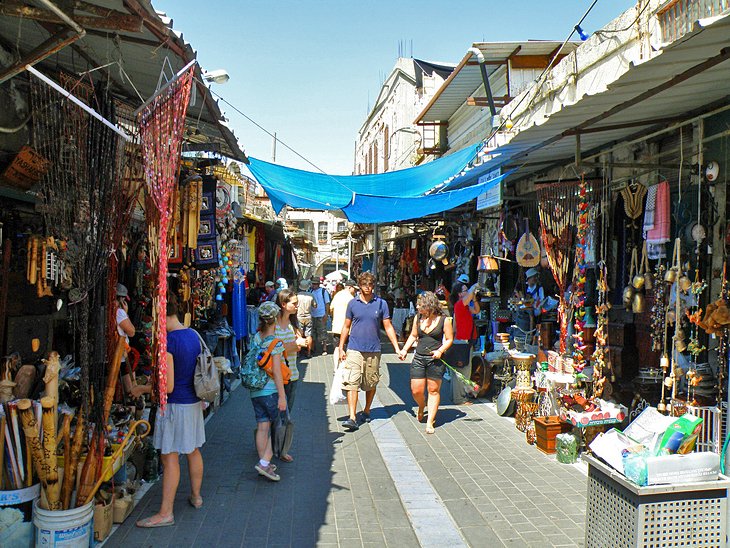
A rummage through Jaffa's flea market in search of a special treasure to bring home is one of the great joys of a visit to Jaffa. There's a lot of complete rubbish on display here, but if you fossick hard enough (and are lucky) you could indeed find a real gem. Bargaining is the name of the game so you'll have to put your haggling hat on.
Hours: Open Sun-Thu 10am-6pm, Fri 10am-4pm
Location: off Olei Zion Street
3 Jaffa-Time: Clock Tower
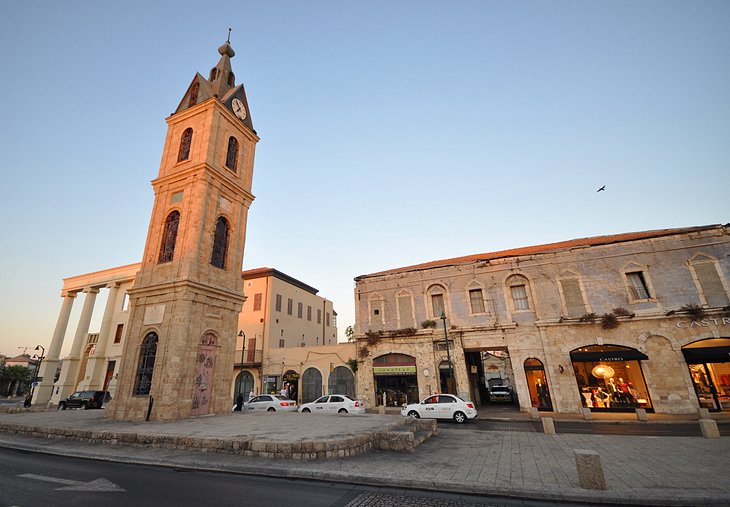
In Jaffa's central square, this late-Ottoman clock tower (built in 1906) was constructed to mark the 25 year jubilee of Sultan Abdul Hamid II. It's the major landmark of Jaffa.
Location: Yefet Street
4 Green Space: HaPisgah Gardens
These lovely gardens have excellent views over to Tel Aviv and across the Mediterranean. The so-called wishing bridge connects this lush green space with the centre of Jaffa. Excavation work by archaeologists in this area has brought to light earlier occupation levels. A 6-m thick wall from the Hyksos period (18th-16th centuries BC) and a town gate bearing the name of the Pharaoh Ramses II (1290-24 BC) are the earliest levels uncovered.
5 Great Mosque
The Great Mosque (or Mahmudiye Mosque) was built in 1810 by the Ottoman governor Mahmud Pasha - known as Abu Nebut (father of the Cudgel). The builders reused antique columns from Ashqelon and Caesarea here, but mistakenly set them upside down with the capitals at the foot.
6 House of Simon the Tanner
The small mosque here (built in 1730) is believed to occupy the site of the house of Simon the Tanner with whom the Apostle Peter stayed after raising Tabitha from the dead.
Location: off HaMigdalor Street
7 Down by the Sea: Harbor
Jaffa's harbor has been a place of importance from the 2nd millennium BC onwards. Today it is a sleepy place for pleasure boats and little fishing vessels only. Round the harbour are rocky cliffs on which, according to Greek legend, Andromeda - the daughter of the mythical founder of the town - was chained until her release by Perseus.
8 Old Jaffa Visitor Center
A visitor center and archaeological site in one, the Old Jaffa Visitor Center has set up shop in an ancient chamber off the main square where you can find information on tourist attractions in town and browse Greco-Roman ruins at the same time. There's a worthwhile audio visual presentation here on Jaffa's long history as well.
Hours: Open Sun-Thu 10am-6pm, Fri-Sat 10am-5pm
Admission: Free
Location: Kedumim Square
9 A Slice of Art: IIana Goor Museum
The Ilana Goor Museum is located in the heart of Old Jaffa in an impressive, restored mid-18th century home. The building, which is also the artist's home, houses the collection of Ilana Goor including sculptures, jewellery, furniture, and clothing, along with items she has collected over the years. From the balcony there are great views to the sea.
Hours: Open Sun-Fri 10am-6pm
Admission: adult 24NIS, child 14NIS
Location: Mazal Dagim Street
Practical Jaffa Tips
- Free walking tours of Jaffa are offered on Wednesdays by the Tourism Association. Tours begin at 10am and start from the tourist office on Marzuk Street.
- Most of the good dining and cafe options in town are found along Yefet Street and Olei Zion Street.
- The Flea Market area hosts live music and entertainment every Thursday night during the summer months.
Getting There
- Jaffa is an easy walk from Tel Aviv. It's a two-kilometer stroll following the seafront.
- Bus No. 18 from Dizengoff Street and Bus No. 25 from Allenby Street all travel to Jaffa, stopping at the clock tower.
More on Israel
Exploring the Wailing Wall and Jewish Quarter: A Visitor's Guide
Wailing Wall
The 48-meter long Wailing Wall (officially called the Western Wall or Kotel HaMa'aravi) is the holiest Jewish site in Jerusalem's old city. This massive stretch of wall was originally built as the retaining wall for the southwest side of the Temple Mount's Second Temple, destroyed by the Romans in AD 70. Since 1967, the densely built-up area in front of the wall has been cleared to make a large open space known as the Western Wall Plaza. The section of this area nearest the wall is railed off and ranks as an open-air synagogue, with separate entries for men and women. This is where Judaism's great religious ceremonies take place.
Location: Western Wall Plaza
Hurva Synagogue
The beautifully restored Hurva Synagogue is a highlight of the Old City's Jewish Quarter. It was founded by Rabbi Yehuda Hanassi, who arrived from Poland in 1701 with 500 Ashkenazi Jews. It was burnt down by the Arab money-lenders of the city in 1720 when the community could not afford to pay back the loan. The name of the Synagogue stems from this act: hurva translates as 'ruin'. It was rebuilt in 1856, but then destroyed again in the Arab-Israeli war of 1948. After 1967, various plans to rebuild the synagogue came and went until finally, in 2009, the Hurva Synagogue was resplendently restored once more. Tourists are welcome to visit the synagogue but must take one of the synagogue's tour guides. Nearby is the Ramban Synagogue which was founded by Rabbi Moshe Ben Nahman Ramban (also known as Nachmanides) in 1267, making it the oldest synagogue in Jerusalem's Old City.
Hours: Open Sun-Thu 8am-6pm, Fri 9am-1pm
Admission: Adult 25NIS, student & child 15NIS (includes tour)
Location: Hurva Square
Cardo Maximus
Just to the west of the Hurva Synagogue, steps lead down to the Cardo Maximus, one of Jerusalem's two principal streets in Roman and Byzantine times. Excavated between 1976 and 1985, it runs for a length of just under 200 m, 6 m below the modern ground level. As the reproduction of the 6th-century Madaba Map of the Holy Land (the original is in Madaba, Jordan) displayed here shows, it was a magnificent avenue, lined with shops and flanked by columns that supported a roof. Back on modern ground level, but still following the path of the original Cardo below, the street is again lined with souvenir shops so you can browse for wares just as the Romans once did along this road.
Location: Jewish Quarter Road
Sephardic Synagogues
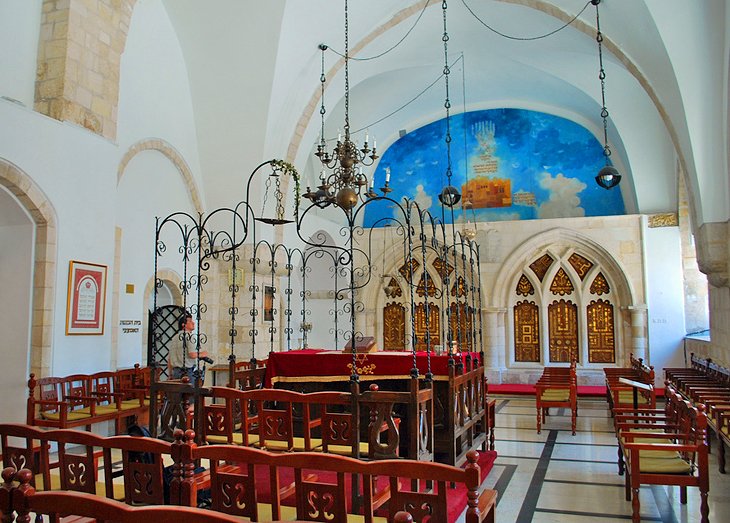
The four Sephardic Synagogues on HaTupim Street were built in Jerusalem's Ottoman era when many Jews from Europe arrived in the city. The Ben Zakkai Synagogue is named after a rabbi of the Roman period. The Istanbuli Synagogue was founded by Turkish Jews and dates to 1764. The name of the Eliahu Havani Synagogue commemorates the association of the site with the prophet Elijah, while the small Emtzai Synagogue, squeezed between the other three, was originally only the vestibule to the others. All four suffered damage in 1948, but have been restored following their original 17th- and 18th-century form.
Hours: Open Sun-Thu 9.30am-4pm, Fri 9.30am-noon.
Admission: Free
Location: HaTupim Street
Herodian Quarter (Wohl Archaeological Museum)
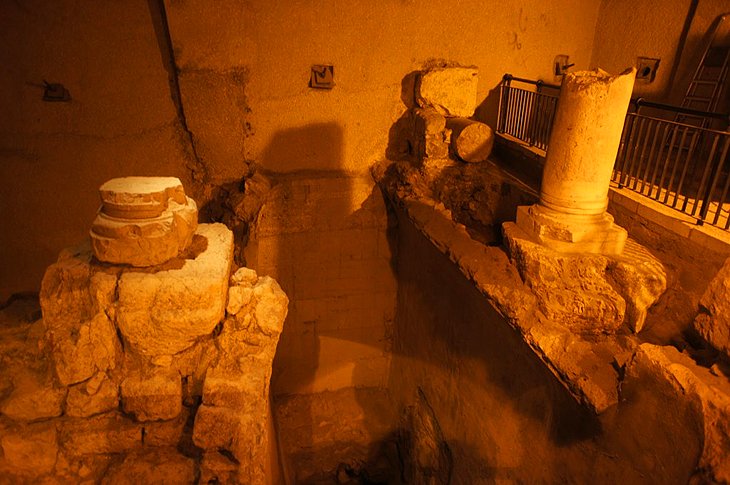
East of the Hurva Synagogue, is the Wohl Archaeological Museum (more commonly known as the Herodian Quarter) where a number of houses built in the reign of Herod the Great (40-4 BC) and destroyed in AD 70 during the Jewish War have been brought to light. The size and magnificence of the houses (in particular some of the mosaic flooring which has been excellently preserved) and the elaborate bath houses, bear witness to the wealth of their one-time owners. The excellent information boards walk you through the ruins with exhibits of stucco and fresco decorations as well as domestic equipment and other objects found during the excavation.
Hours: Open Sun-Thu 9am-5pm, Fri 9am-1pm
Admission: Adult 18NIS, student & child 13NIS
Location: HaKaraim Street
Burnt House
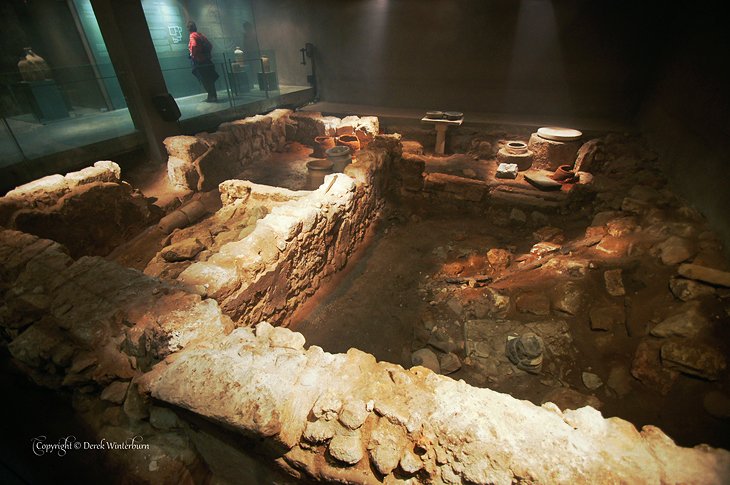
This fascinating, small museum is a ruined house from the Herodian period that lay undiscovered for centuries after its destruction by the Romans in AD 70. A host of finds were discovered here including Roman coins and a female skeleton. An audio-visual show is presented several times daily and gives you a vivid picture of the history of the Jewish Quarter, in the time of Herod, and its destruction by the Romans.
Hours: Open Sun-Thu 9am-5pm, Fri 9am-1pm
Admission: Adult 25NIS, student 20NIS
Location: Tiferet Israel Street
Practical Jewish Quarter Tips
- The most atmospheric time to visit the Wailing Wall is at sunset on Friday when the beginning of Shabbat brings crowds to the wall.
- Those of all faiths can visit the wall. Note the separate areas for men and women and dress modestly. Men are required to wear a kippa (Jewish male head-dressing). These are available on-site. Modest dress is also required to enter the synagogues of the Jewish Quarter.
Getting There
- From central Jerusalem, take Egged Bus No. 38A which runs from King George V Street through the Jewish Quarter and to the Western Wall Plaza and other attractions.
- The nearest Gate into the Old City's Jewish Quarter is the Dung Gate.
- If you're walking from Central Jerusalem, Jaffa Gate is the nearest approach.
14 Top-Rated Tourist Attractions in Haifa
Modern Haifa is a bustling port town, but unlike many industry-focused cities, its landscape of steep cliffs rolling down to the shore gives it a beautiful setting. This is enhanced by the enormous and thoroughly beautiful Baha'i Gardens which dominate the central city in a series of cascading terraces. This major highlight in any Haifa itinerary is also an example of the modern town's overall harmonious approach to life. As well as being a centre for the Baha'i sect, Haifa's mixed population of Jews and Arabs is much less segregated here than elsewhere.
1 Baha'i Shrine and Gardens
The extraordinary Baha'i Gardens are Haifa's number one tourist attraction, and the Baha'i Shrine, with its golden dome, is the city's landmark monument. It contains the tomb of Iranian Mirza Al Mohammed, who declared himself 'Bab' ('gateway' to God) in 1844 and founded the Baha'i faith. Ali Mohammed was assassinated in Tabriz (Iran) in 1850, and his successor, Mirza Hussein Ali, who became known as Baha-u-Illah, fled to the Ottoman Empire where he proclaimed himself Imam in 1868. He died in 1892, having been held in captivity at Acre for 24 years. His followers secretly brought the remains of his predecessor, Mirza Ali Mohammed, from Iran to Haifa and built his tomb here. Today, the terraced gardens and shrine are an incredibly tranquil and beautiful memorial as well as an immaculate example of garden landscaping. UNESCO has declared them a World Heritage Site for their cultural as well as natural beauty. For those of the Baha'i faith they are also an important place of pilgrimage. The Shrine of the Bab, towards the top of the terraces, contains the tomb of Mirza Al Mohammed.
Hours: Outer gardens, daily 9am-5pm; Inner gardens & shrine, daily 9am-noon
Admission: Free (there is also a free tour of the gardens in English at noon every day, except Wednesday)
Location: off Yefe Nof Street, Central Haifa
Official site: www.ganbahai.org.il
2 Stella Maris Carmelite Monastery
The present Stella Maris Carmelite Monastery was built in 1836 and is noted for its lush frescoes portraying the St Elijah. The interior also contains paintings of scenes of the lives of the prophets Isaiah and Ezekiel and has a cedar figurine of the Virgin known as the Madonna of Mt. Carmel. The Carmelite order was founded on Mount Carmel in 1150 as a hermetic Catholic sect. When the order sided with Napoleon during his battle against the Ottoman Turks in 1799, the Carmelite monasteries were destroyed. In front of the building is the tomb of the French soldiers who were killed during the battle. Afterwards, this monastery was rebuilt but was again razed in 1821 by the pasha of Akko (Acre). There is a small but interesting museum in a room adjoining the monastery entrance. From the monastery, a trail leads down to the grotto known as Elijah's cave, believed to be either the one-time dwelling place or tomb of Elijah.
Hours: Open daily 6am-noon & 3pm-6pm
Admission: Free
Location: off Tchernikovsky Street, West Haifa
3 Cable Car
The cable car is the easiest way to get up to Stella Maris Carmelite Monastery and by far the most fun. There are excellent panoramic vistas all the way up. Even if you're not interested in visiting the monastery, the views from the lookout point at the top across Haifa and out to the Mediterranean are worth the ride.
Hours: Open 10am-6pm
Admission: One way 19NIS, return 28NIS
Location: entry from HaHaganah Street, Galshanim Beach
4 Elijah's Cave
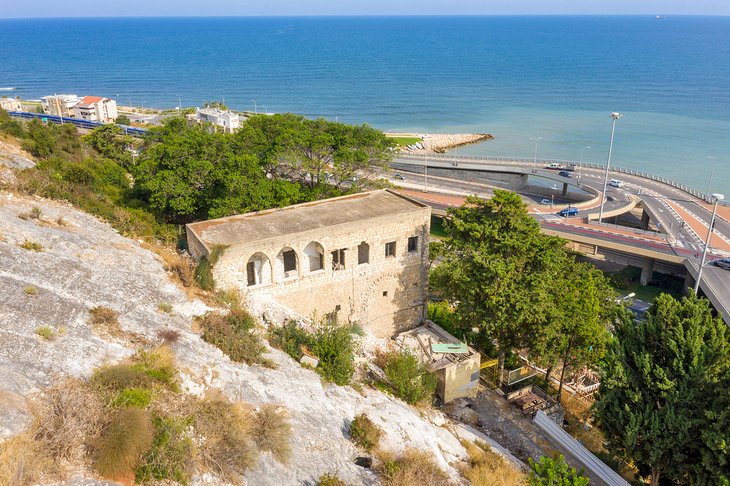
Opposite Stella Maris Carmelite Monastery, a path leads down to Elijah's Cave at the foot of the cape. Believers hold that Prophet Elijah hid here after killing the priests of Ba'al. It is an important pilgrimage site for Jews, Muslims, and Christians who all hold Elijah in high regard. Until 1948, the site was a mosque.
5 Downtown Haifa
Ben-Gurion Street is the old main street of the German Protestant colony founded here in 1868 by members of the Society of the Temple, who believed that settling in Palestine would bring about the Second Coming. The society continued to exist until the Second World War. The old houses, with their tiled roofs, have all been spruced-up and are very characteristic of their period. The street is now home to Haifa's best dining and shopping. The cemetery of these zealot settlers lies to the northwest, at 150 Jaffa Street, next to a British military cemetery of the First World War.
6 Beaches
Haifa has two main beaches. BatGalim Beach is a favorite with water sports enthusiasts. Windsurfers and kiteboarders take to the waves on sunny days. Hof HaCarmel Beach is more about laid-back sunbathing and general lounging. Both have excellent facilities with cafes and sun loungers for rent.
7 Mane Katz Museum
This excellent museum contains the paintings and sculptures of Mane Katz, who was an influential 20th century Jewish artist. As well as his expressionist art, Katz was a great collector and his personal collection of Judaica and antique furniture are on display here. Just down the road is the Tikotin Museum of Japanese Art (89 Hanassi Avenue) which features exhibits of Japanese artistry from the 14th century right up to the present day.
Address: 89 Ye'fe Nof Street, Carmel Centre
8 Ursula Malbin Sculpture Park
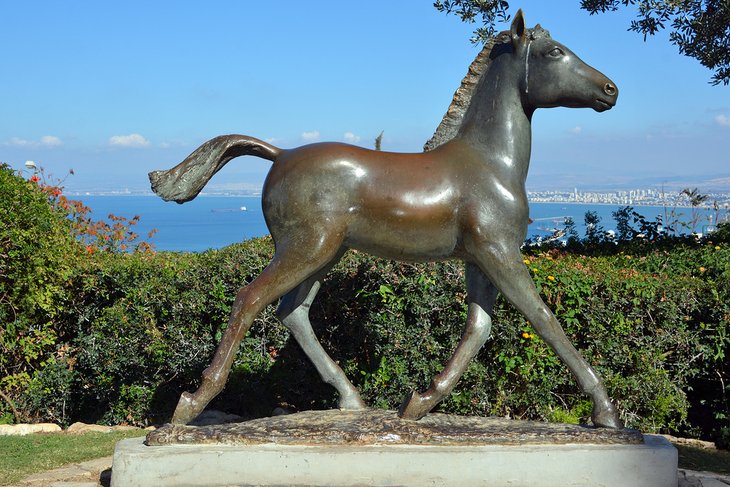
This lovely public park is full of gorgeous bronze statues and is a great place to relax after a morning of sightseeing. The statues were all made byGerman-born artist Ursula Malbin who lives part of the year in Israel.
Location: Haziyonut Street, Central City
9 Madatech
If you're travelling with children, make a beeline for this interactive science museum that will keep kids-big and small-thoroughly engrossed. The museum's stately building was once the base for Israel's Institute of Technology and was erected in 1913. Inside, there are all manner of science-based exhibits from zany and colourful chemistry displays to exhibits explaining aviation and green energy.
Hours: Open Sun-Thu 10am-3pm, Sat 10am-5pm, Fri 10am-1pm
Admission: adult 70NIS, student 35NIS, child 5-18yrs 65NIS, under 5yrs free
Address: 25 Shermaryahu Levin Street, Hadar HaCarmel
Official site: www.madatech.org.il
10 Caesarea
Halfway along the coast, between Haifa and Tel Aviv, Caesarea is home to one of Israel's most fascinating ancient sites. The site has been occupied since the 4th century BC, when the Phoenicians built a harbor here, and went on to become an important town for the Greeks and Romans. Herod the Great named the town Caesarea in honor of Emperor Augustus. It was during this period that the city really bloomed with temples, a theater, hippodrome, and busy harbor. By the 1st century AD, Caesarea was an important Christian center, but its era of grandeur ended with the Arab conquest in 637 AD. Archaeological investigation of the site continues, and a number of important finds from the site, including a figure of Artemis of the third century BC and an important Byzantine mosaic, are now in the Israel Museum in Jerusalem. The Crusader city remains and Roman theater (within the archaeological park itself) and the gorgeously melancholy remnant of the ancient aqueduct (upon the beach), that was part of the city's Herodian period, are the three highlights of a visit here.
Hours: Open daily 8am-6pm
Admission: adult 38NIS, child 23NIS
11 Mount Carmel
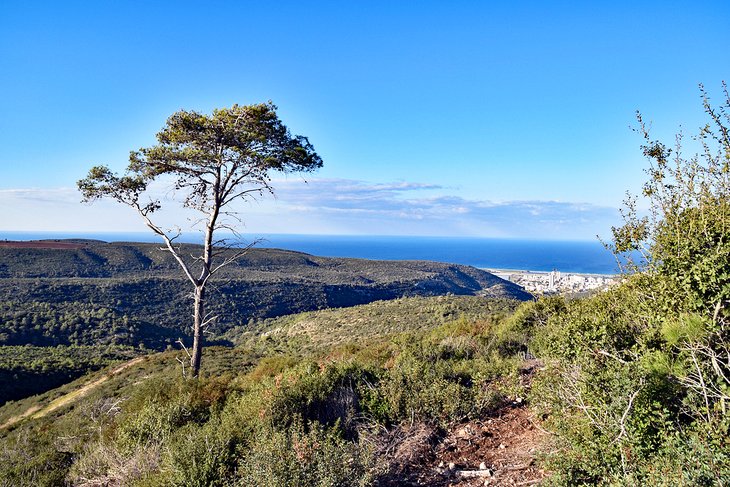
If you have your own wheels, tooling around the slopes of Mount Carmelmakes an excellent day trip from Haifa. The big historic sightseeing attraction here is the Carmelite Monastery of St. Elijah where, according to tradition, Elijah set up an altar during his conflict with the priests of Baal. The small settlements that speckle the slopes of the mountain are just as interesting as the church, if not more so. Ein Hod is an artists' village riddled with galleries, while Zichron Ya'acov is the headquarters of Israel's boutique wine-making industry. Bet Oren, on the lower slopes, is where the remains of the 'Carmel Man' (a Palaeolithic skeleton unearthed in caves 6 km west of the actual village) was found. The remains, and other finds from the site, are now in Jerusalem's Rockefeller Museum.
Location: off Tchernikovsky Street, West Haifa
12 Dor
A favorite weekend hangout for stressed out city-folk from Haifa, Dor is home to one of Israel's most picture-perfect beaches. Although today, people mostly travel here for the pleasures of sun, sand, and sea; Dor has a rather illustrious history. Excavations here, just to the north of the modern town, have brought to light remains of the old harbor, a Crusader castle,and a 6th century Byzantine church. If you can manage to drag yourself away from the beach, the ruins are well worth a look.
Location: 29 km south of Haifa
13 Beit Shearim
This fascinating archaeological site is particularly notable for the impressive catacombs excavated by B. Mazar in 1936, and later, by N. Avigad. Most of the ruins date from the 2nd century AD when the site was an important rabbinical city. Archaeology buffs will find the ancient remnants of Jewish life here engrossing.
Location: 20 km southeast of Haifa
14 Atlit
Atlit is home to two interesting historical sites. Atlit Crusader castle dates from 1200 when it was known as Castrum Peregrinorum or Chateau des Pelerins (Castle of the Pilgrims). Unfortunately, these days you can't enter it as it is on military land. Much more recently, Atlit was the destination where Jewish immigrants, endeavoring to flee Nazi Germany during World War II, ended up being held when they arrived in Palestine. The ruling British held them here at Atlit Illegal Immigrants Camp, which has been preserved for posterity.
Other Notable Attractions
National Maritime Museum
The National Maritime Museum has a collection of model ships, maps, and charts that illustrate the history of seafaring in the Mediterranean region. Just down the road is the Clandestine Immigration and Naval Museum which documents the Zionist movement's efforts to get Jewish refugees into Palestine during the British Mandate period.
Location: Allenby Road, Central Haifa
Haifa University Museums
Haifa's University complex has a clutch of museums and sightseeing attractions that are worthy of a visit. The Eshkol Tower here has anobservation deck for excellent views across the city, and the tower's ground floor is home to the Reuben and Edith Hecht Museum, which traces Jewish history pre-Diaspora.
Location: 2.5 km south of Haifa
History
Although it was destroyed in the 7th century, Haifa was famed in the 11th century for its shipbuilding and its Talmudic college. In 1099, it withstood a six-month-long siege by the Crusaders, but was finally destroyed. In 1187, Saladin captured it from the Crusaders, but in 1191 it was recovered by Richard Coeur de Lion. The Crusaders were finally expelled from the town by Sultan Baibars. The monasteries of the Carmelite order, which was founded in Haifa in 1150 by a monk named Berthold, were destroyed after the fall of Acre in 1291, when the monks returned to Europe.
Under the Mamelukes (from 1517) and the Ottomans, Haifa was an insignificant fishing village. In 1740 Daher el-Amr, lord of Galilee, took the place and founded a new settlement, the present Old City, between Kikar Paris (Paris Square) and the Head Post Office. He also developed the harbor for the export of grain to Egypt. Under Ahmed el-Jazzar, who succeeded Daher in 1775, the Carmelites were able to reestablish themselves near Elijah's Cave. In 1799, during Napoleon's advance on Akko (Acre), their monastery was used as a military hospital, but after Napoleon's withdrawal the French wounded were killed by Ahmed el-Jazzar.
The importance of Haifa increased with the coming of steamships, for which the nearby harbor of Akko was too small. In 1868, the population was increased by the arrival of German settlers, members of the Society of the Temple. When the German Emperor, William II, visited Haifa in 1898 a jetty was constructed, and thereafter the development of the port continued. The Emperor promoted the idea of linking Haifa with the Hejaz railroad and thus opening up the town's hinterland. The upswing in the economy led to the expansion of the Old City to the northwest, in the direction of the Germany Colony. The first Jewish school had been established in 1881. Christians from Lebanon and Arabs also now moved into the town, and two sects that had broken away from Islam, the Baha'i from Iran and the Ahmadiya from India, made Haifa their headquarters.
In September 1918, British forces occupied the town. Thereafter a new railroad line was built, linking Haifa with Egypt by way of Gaza. New industrial installations came into being. This development continued in spite of conflicts between the Jewish and the Arab populations. The modern deep-water harbor was completed in 1933, followed in 1934 by the development of the oil terminal at the end of the pipeline from Iraq.
In 1936, following further outbreaks of violence, the Jewish population left the eastern part of the lower town and concentrated in the Hadar HaKarmel district. Haifa was thus for all practical purposes divided into two. During the Second World War, the German members of the Society of the Temple were evacuated. After the war, there was continuing conflict between the Jewish underground organization Haganah, the British naval base, and the Arabs - a conflict from which Haganah emerged victorious.
1234566666
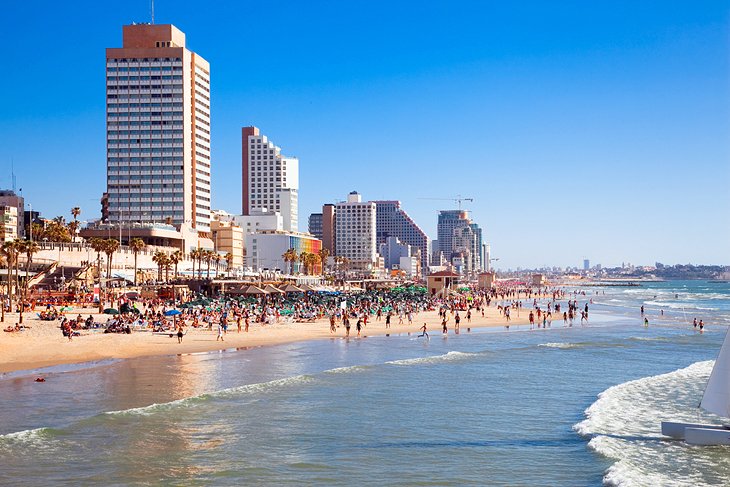
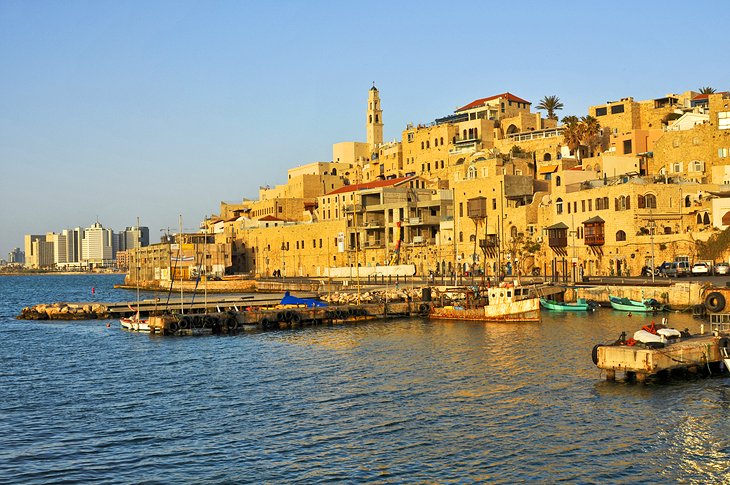
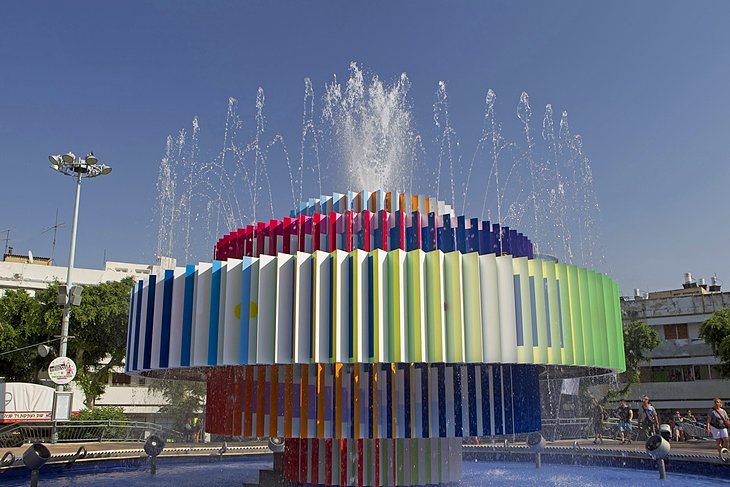
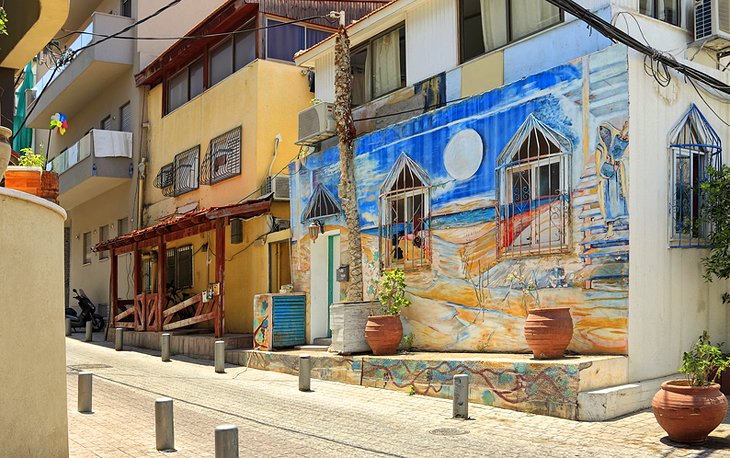
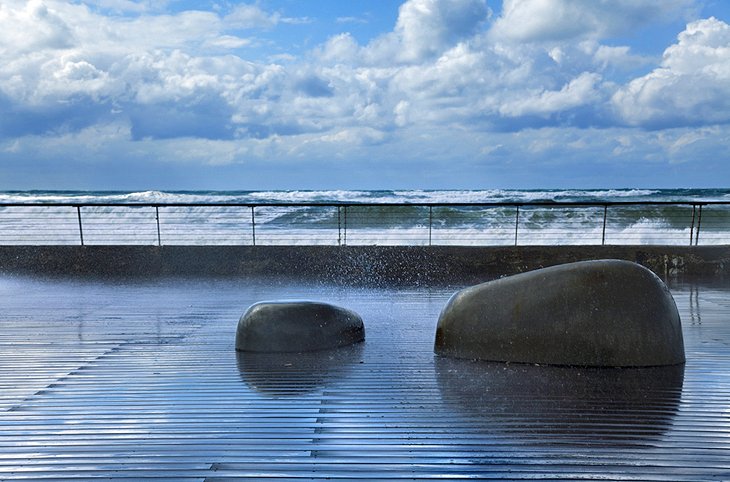
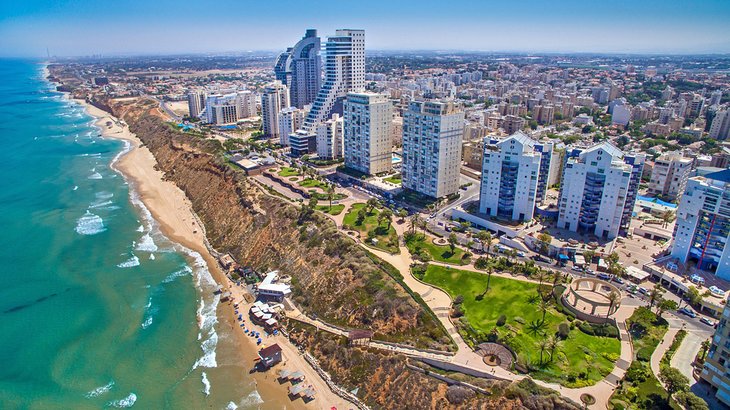
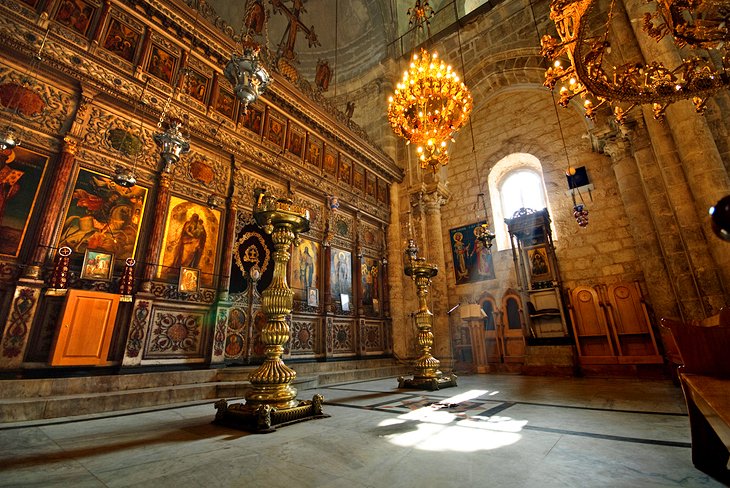
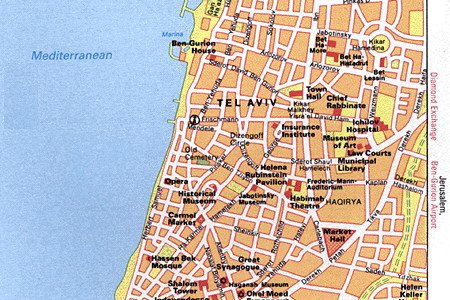
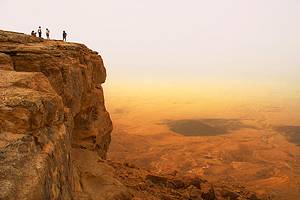
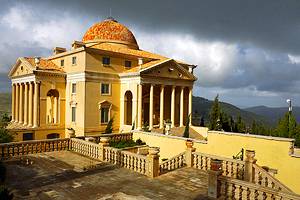
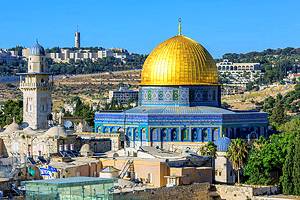
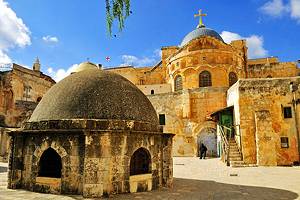
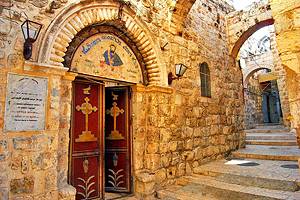
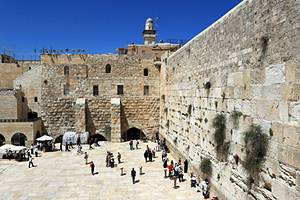
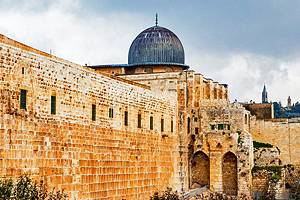
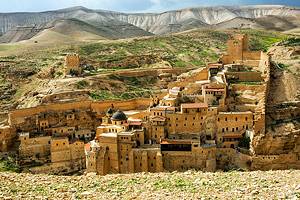
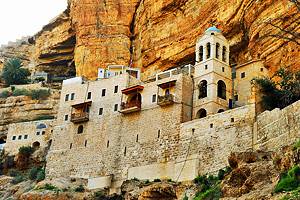
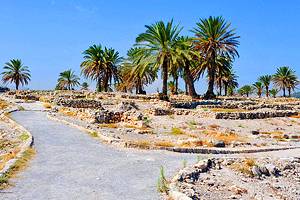
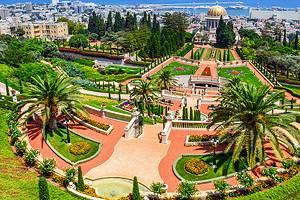
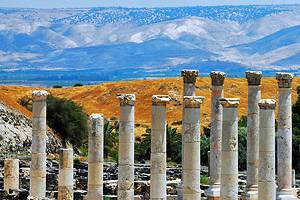
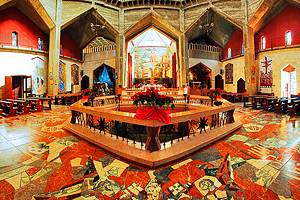
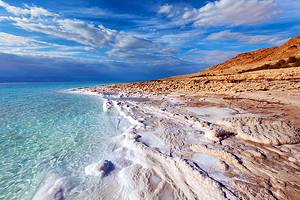
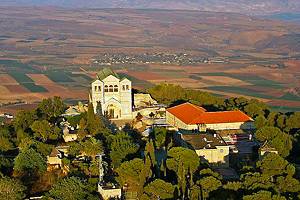
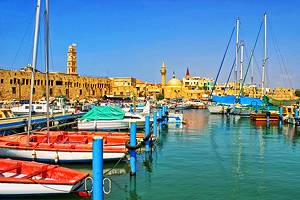
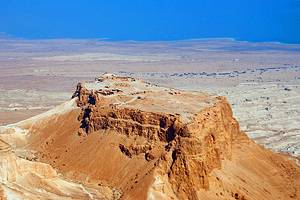
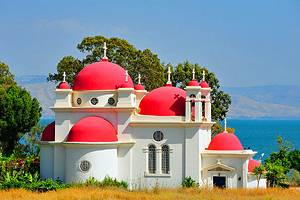
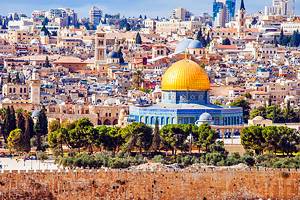
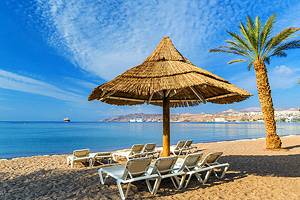
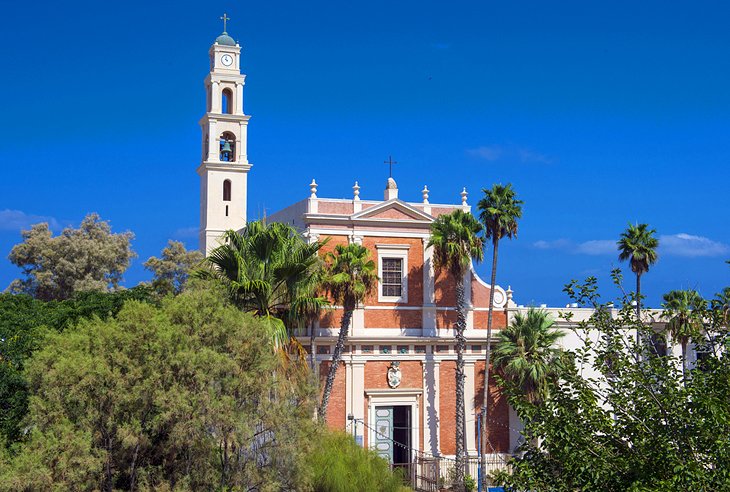
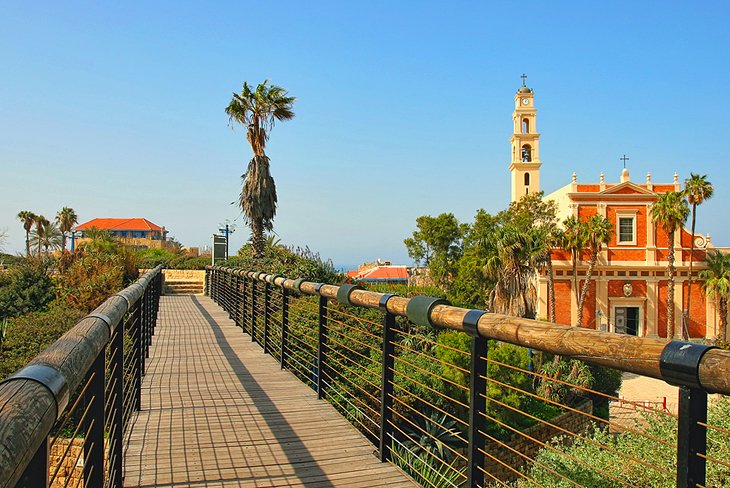
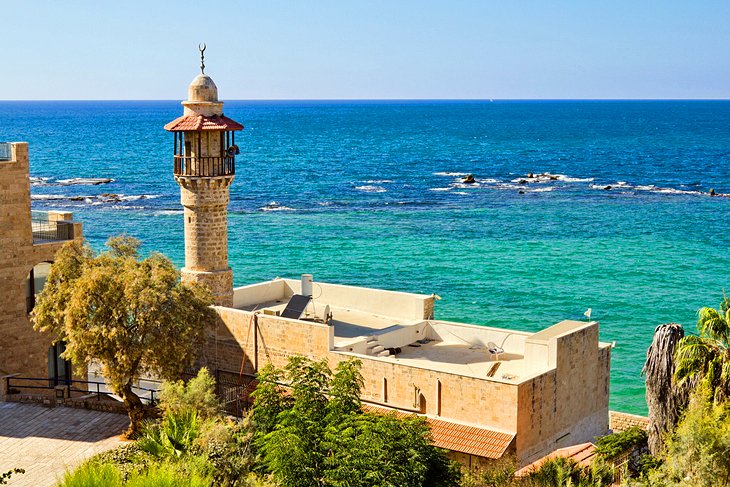
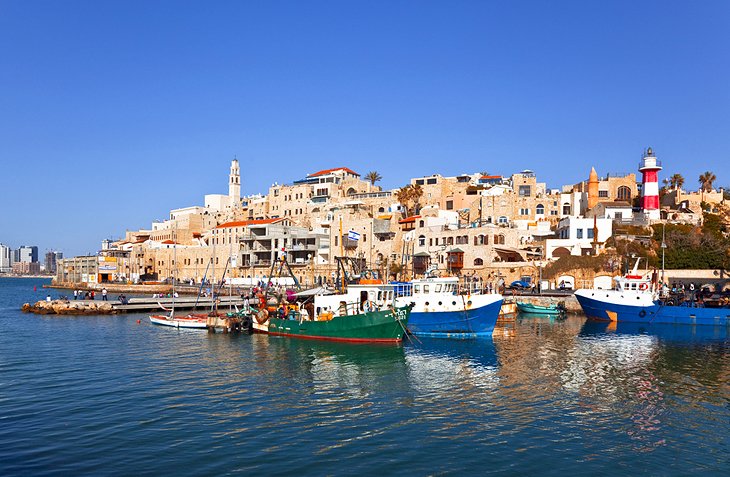
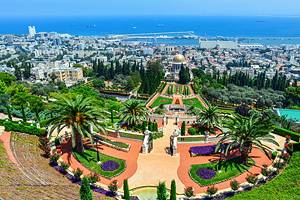

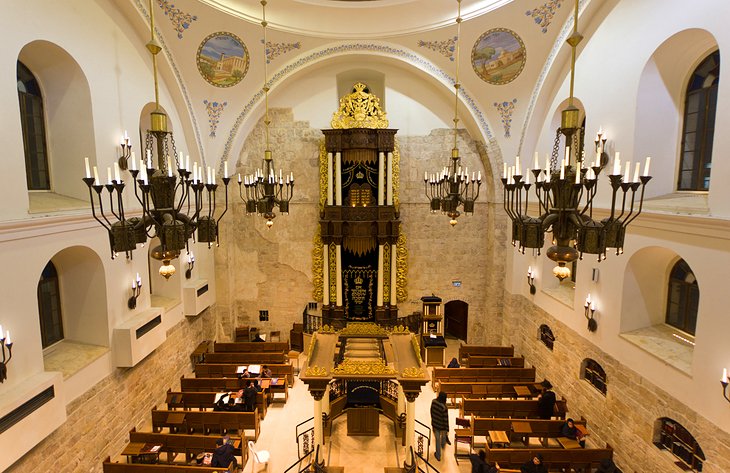
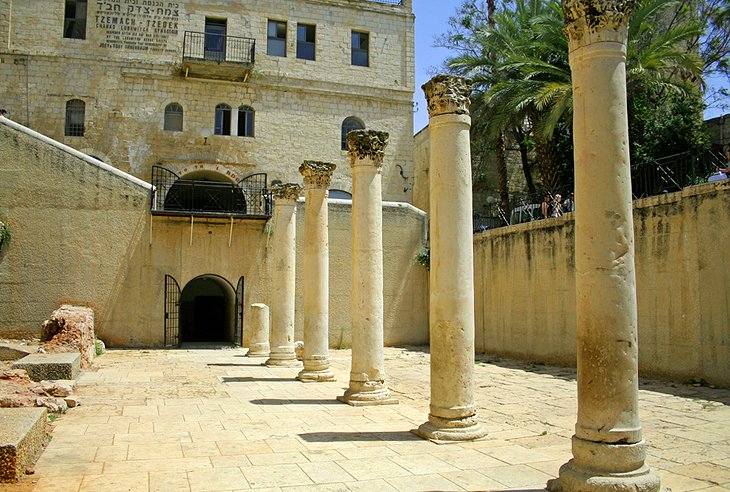

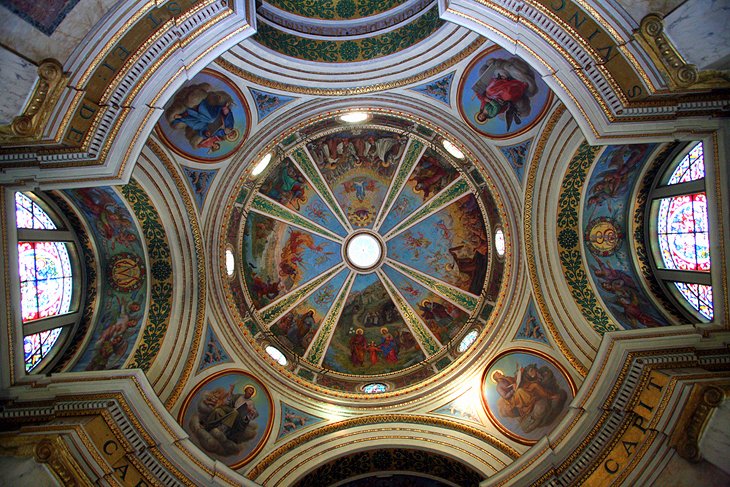
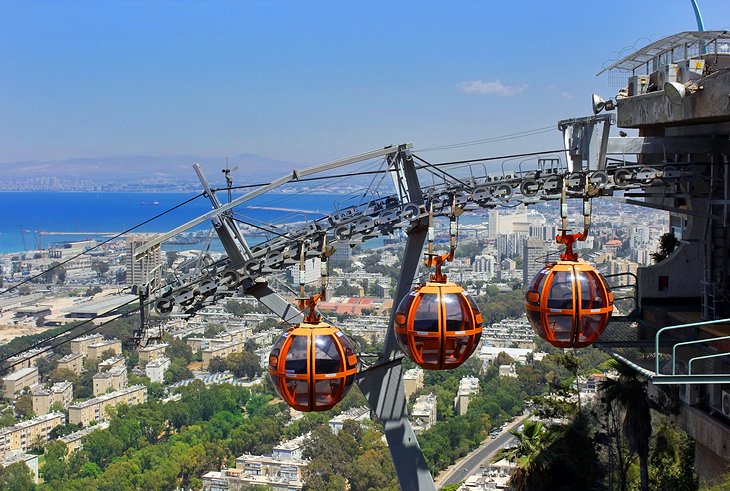
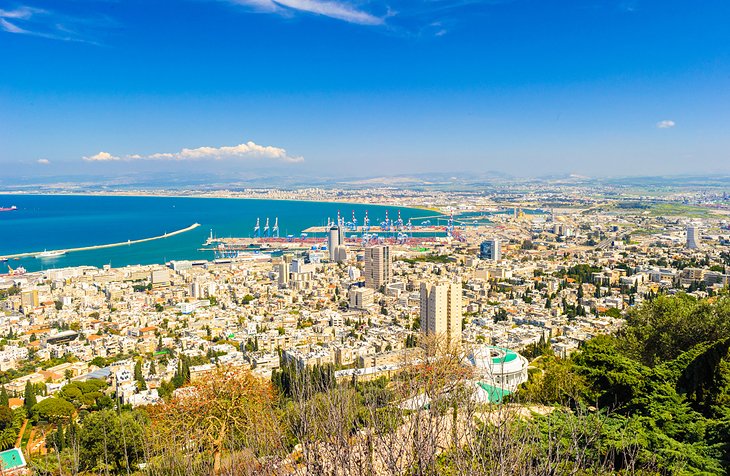
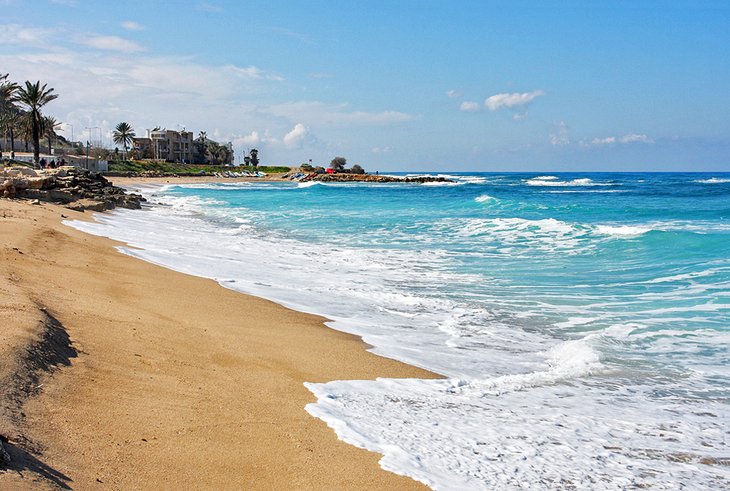
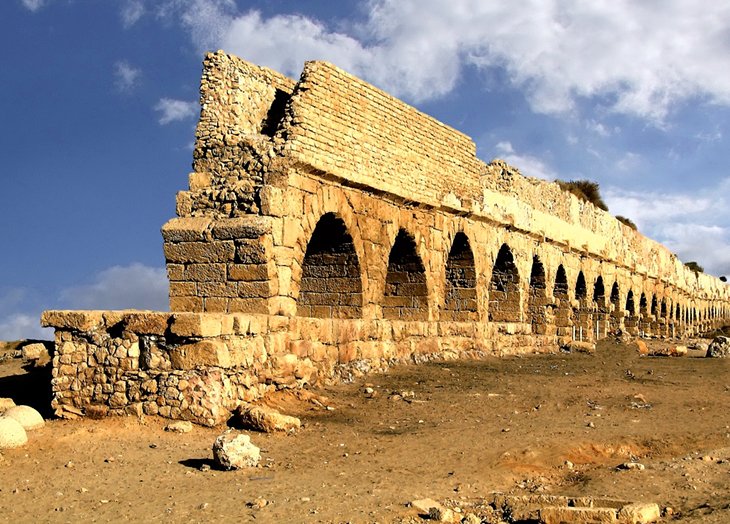
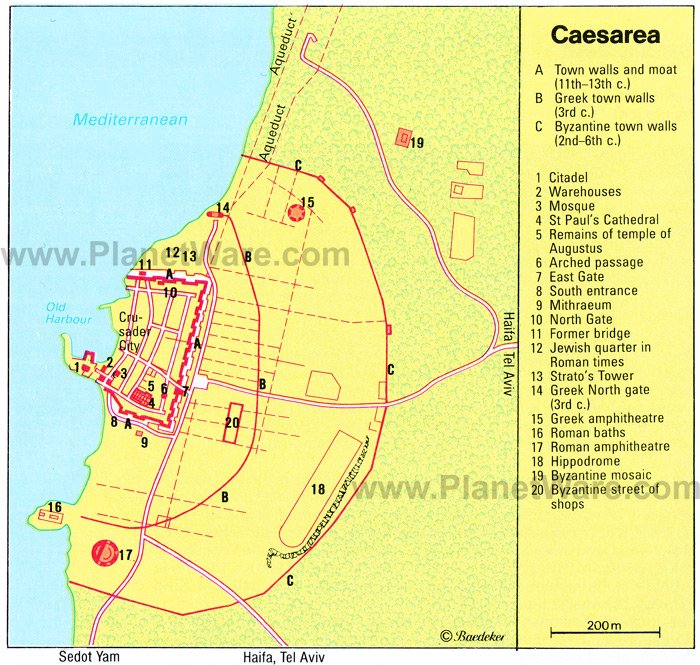
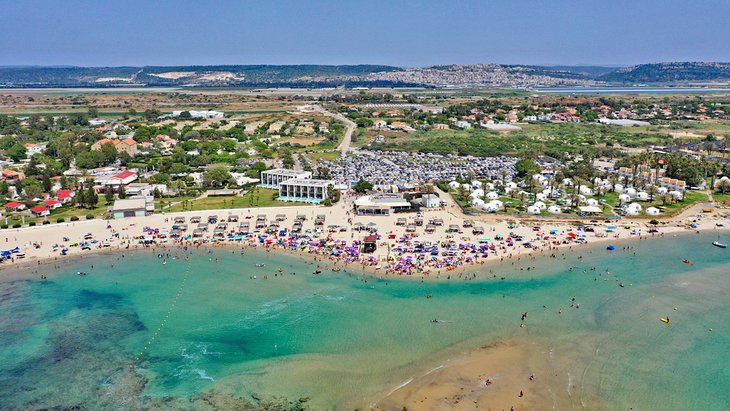
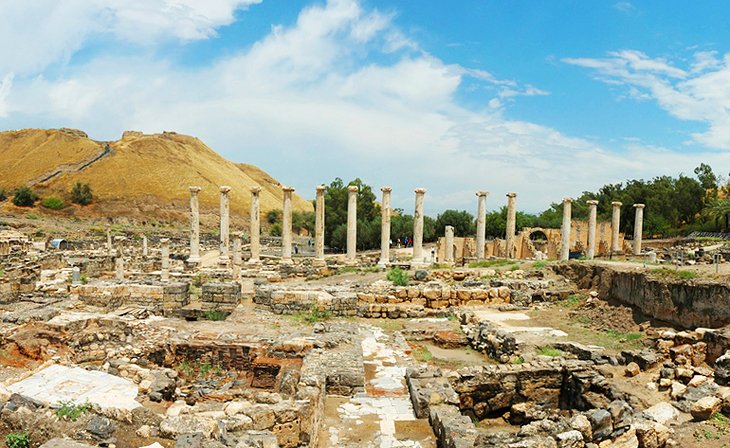
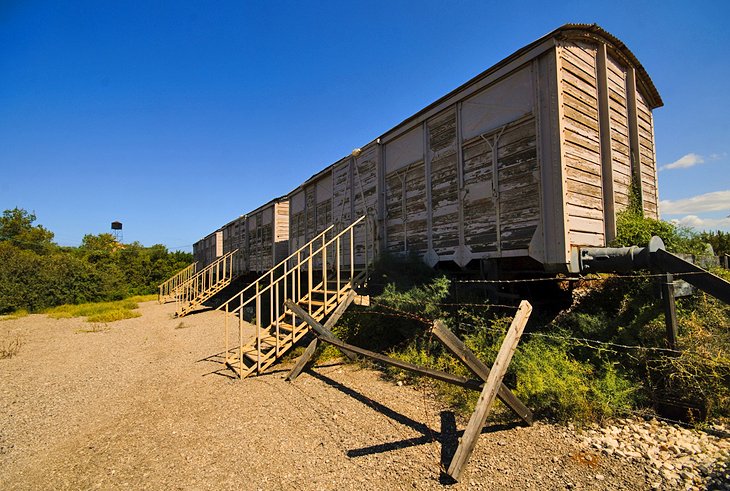
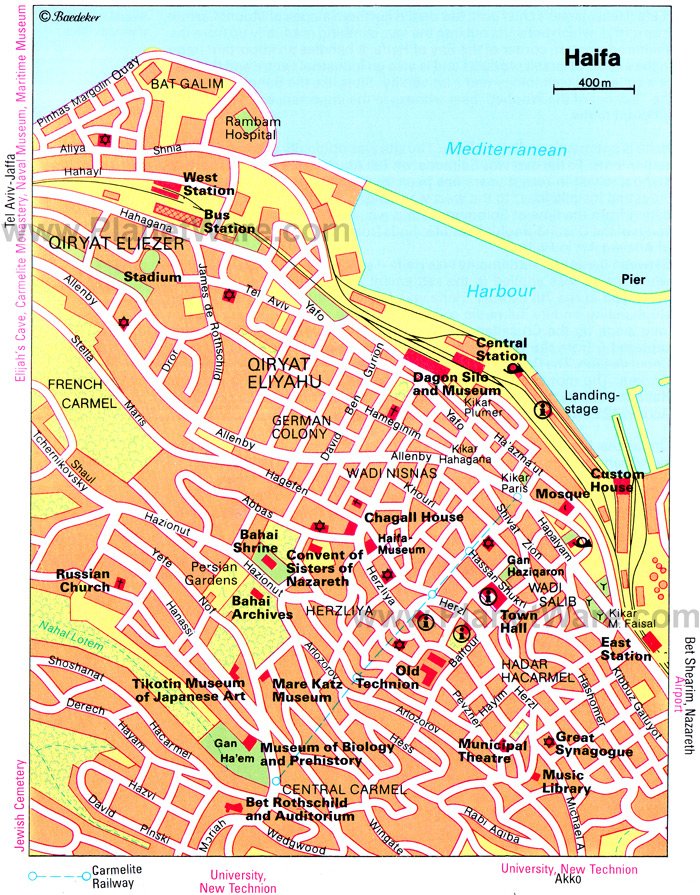
No comments:
Post a Comment